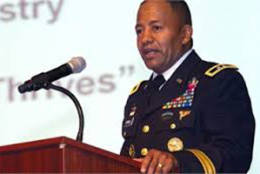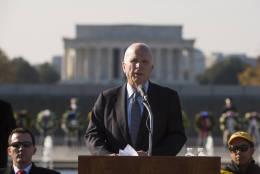Technology
HumanGeo Group CEO Al Di Leonard and company CTO Abe Usher join host John Gilroy to discuss how federal information technology professionals should handle geospatial data. December 20, 2016
December 18, 2016-
Nathan Kielman, tactical mobility lead in the weapons division at the Naval Air Warfare Center, has an idea that takes a new approach to the issue of mobility vs. slow defense acquisition. Why not reclassify mobile technology, treating it like less expensive equipment meant to be used up and disposed?
December 16, 2016 -
Lt. Gen. Bob Ferrell, the Army’s chief information officer/G6, said there are several parallel initiatives like data center consolidation and network consolidation to reach the end goal of having a modernized IT infrastructure and end-user services.
December 16, 2016 -
NASA is about to launch the next half dozen earth-observing satellites. Besides gathering data, they'll demonstrate the next generation in satellite technology and new approaches to studying the planet. Aaron Ridley, professor of space science at the University of Michigan, joins Federal Drive with Tom Temin with more on these small but potent beauties.
December 15, 2016 -
Federal IT Dashboard data compiled exclusively for Federal News Radio shows the average time it takes an agency to complete an IT program to is 1,018 days and the average cost is $23.2 million per program. Both of these data points demonstrate the need to change how CIOs and mission owners measure project success.
December 15, 2016 -
President-elect Donald Trump's promises to expand the military are bringing up classic debates that may end with a bigger force structure.
December 14, 2016 -
Federal CIOs say if you want to get on board with agile services, be adaptable, communicate and don't be afraid to fail.
December 13, 2016 -
The Air Force Chief Information Security Officer says the training is needed to reduce breaches and make sure airmen are using Air Force computers for mission tasks.
December 13, 2016








